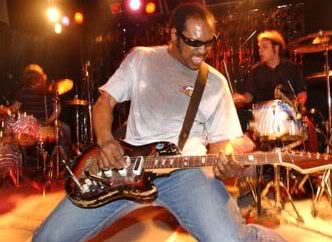Back to Inner Sleeve - the Rat Records blog>
Critical Beats Down 1: Mysteries Of Bunk

Do you remember the first time you got lost to the sound of repetitive, hypnotic and transcendently liberating percussion?I'm not talking happy hardcore or cartoon bubble rave, but the things that came when the fad chasers moved on to Brit Plop, Indie Idiocy, Big Beat Buffonery, Bristol Bluster, saggy baggy slush or something else.Just like when Disco had long become a punch line and Larry Heard conjured peerless phoenixes from the wreckage with just a big soul and a small home studio.The last thirty years has seen the dawn, mainstream death, re-birth, remix and revolution from within what can loosely be called 'Dance/Club' music. It is a story filled with mysteries. A story driven along by the epic, eternal struggles between:� Art and commerce� Being accessible and being true� Innovation and mass appeal� Old and new audiences� Playing to a crowd or just playing with yourselfFar better heads than me, who were actually there, have chronicled the genesis of the genius. I can only grasp the threads I can reach but here is my bluffer's guide potted hissing windbag no doubt wrong on some level history for the curious:Disco had tickled a need of the punters to feel good again after the hippie hangovers and protest bores of the early 70s, and it tickled the tills of the record industry. It pumped up and blew up in the mainstream in a piss rain of masked racism, homophobia, and just too much openly cynical trash product being jammed into the market. Black, Gay and some Latin audiences were not finished with dancing, so 'Boogie', 12 inch mixes of Soulful and Funky stuff came along. Innovators in the then dying Rust Belt playing demanding new clubs that don't need to be named started to run out of records, and even parts of records that kept the dance floor moving. So they made their own. Some of them are the most innovative and interesting sonic art ever recorded. Most are dross. US radio and mainstream culture felt dance = Very Gay so offered no outlet for the music besides local scenes and shows, at the margins. A candy major label echo appeared on 'Club MTV' which really was about fit people writhing about pretending to be happy. Thus, as with any epochal American cultural genius, much like Jazz, the music had to cross the Atlantic. It was loved, parodied, bastardised, and sometimes even evolved into novel forms. Until the licensing laws changed and the parties moved from out of town fields too close to the uncool in stinking anarchy, there was the whole rave thing. Then that got killed by the Law, and changes in tastes. Leaving behind plenty of traces, from dance oriented guitar acts to some opened minds and memories.What was left was a church for the true believers. A cult headed by the huddled and secret keepers of the Undying sonic temple flames of Detroit, Chicago and a thousand dark, unnamed, unseen warehouses and bedroom studios.Techno, Electro Bass, Jungle, Minimal, Electro, Basscore, whatever it was it sure could move you and was fucking FAST. Not Gabba or Dog Thing on a String Stupid Noise fast, but rapid, insistent, intelligent.Music that demanded to be heard and wanted something of you. Tunes that did not pause to make friends, but whose virtues were self evident if you were hip to the sound.A sound now slowly sagging towards an easier tempo. And I'm not sure why.Philippe reckons the average beats per minute in this golden sage age was about 20 higher than today. Some youngsters are even rediscovering it in the rat racks.DJs and producers like Jeff Mills, Ritchie Hawtin, Dave Clarke, Carl Craig, Aux 88, Laurent Garnier, Stacey Pullen, Surgeon and a galaxy of other stars ignited a supernova of sonic genius.Dance and club oriented electronic music had not yet become co-opted, corrupted and co-managed by the branded mainstream. Why? It was hiding in plain sight.It was too hard to get at or into, relatively. It was not on adverts, in soundtracks or Top of the Slops, or on commercial radio or even the BBC except late at night. It was not played out at venues large and small from The Marquee to The Ministry of Scat except briefly by mistake. It was not pimped and reviewed in The NME or Melody Maker or your parents papers. It wasn't a super small scene like people exchanging Tibetan Nose Flute EPs with a wink. If you knew what to look for even a provincial HMV had Mix CDs, some mags had a giveaway tape or disc on the cover and were 'dance' oriented.Yet it was safe, hidden and sacred.Like an underground secret society, a modern Midnight Funk Association, you needed an invite. The greatest friends in time and blood I could ask for were already balls deep into beats, black wax (often imported) and bass. I never could reach the level of connoisseur these real players had, but the last 20 beats had not gone missing. Yet.
Looking for a gem of wisdom and insight from an older article?
Search the inner sleeve
Sell Your Records & CDs To Us
It's quick, it's easy.
We're friendly, fair and knowledgeable, and we collect nationwide.
"I never expected to enjoy selling my record collection, but you made the process a remarkably upbeat one."
